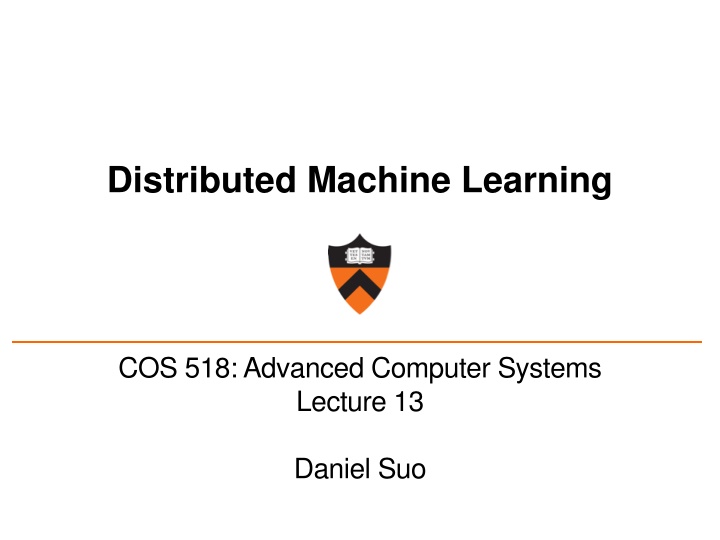
Understanding Machine Learning in Distributed Systems
Delve into the complexities of machine learning in parallel and distributed systems, exploring definitions, classifications, examples like linear regressions, and the distinctions between statistics and machine learning. Discover the concept of representation learning and its importance in the absence of organized data features.
Download Presentation

Please find below an Image/Link to download the presentation.
The content on the website is provided AS IS for your information and personal use only. It may not be sold, licensed, or shared on other websites without obtaining consent from the author. If you encounter any issues during the download, it is possible that the publisher has removed the file from their server.
You are allowed to download the files provided on this website for personal or commercial use, subject to the condition that they are used lawfully. All files are the property of their respective owners.
The content on the website is provided AS IS for your information and personal use only. It may not be sold, licensed, or shared on other websites without obtaining consent from the author.
E N D
Presentation Transcript
Distributed Machine Learning COS 518: Advanced Computer Systems Lecture 13 Daniel Suo
Outline What is machine learning? Why is machine learning hard in parallel / distributed systems? A brief history of what people have done 2
Some definitions Give computers the ability to act without being explicitly programmed Program that learns from experience to perform some task better For our purposes (i.e., less philosophical): predictive models that have some parameters that are informed by data 3
Three broad classes Primarily classified by the feedback Supervised: use example inputs with corresponding answers (labels) -> learn mapping Unsupervised: find structure in data without labels (but is anything ever really unsupervised?) Reinforcement: learn policy of behavior in a dynamic environment from rewards / punishments 4
Example: Linear regressions Could be thought of as a machine learning algorithm Want to make predictions Determine parameters from data 5
Example: Linear regressions Model: ? = ? ? + ? Training: Objective / cost / loss: squared error Training procedure: minimize the sum squared error -> matrix multiplication Inference: just plug inputs into our model with parameters from training 6
But isnt this statistics? Lots of overlap, but some notable differences Partly interest Statistics: survey design, sampling, industrial statistics ML: what is learning, what can be learned Partly cultural Statistics: complicated models we can explain but don t work ML: whatever improves prediction performance goes 7
Representation learning What if we don t have data collected and organized into a bunch of features? What if features are hard / impossible to define? Quick example: k-means clustering Initialize centroids Cluster Re-compute centroid Repeat We can create hierarchies of representations Deep learning! 8
Why is distributed machine learning hard? Iterative Many algorithms use some kind of optimization to find a model that fits data well Functions are often complex, but even simple ones can be approximated with iterative approach Stateful Algorithms often store and update model parameters between iterations Dependent Often can t run jobs independently / needs lots of synchronization 9
What are typical distributed approaches? Dataflow Graph Parameter server Allreduce / MPI 10
So what do people typically do? Use a beefy workstation instead of a cluster A single GPU can sometimes outperform a cluster Use clusters for simple / highly parallelizable algorithms Use data parallelism (as opposed to model parallelism) when possible Even at large companies! 11
